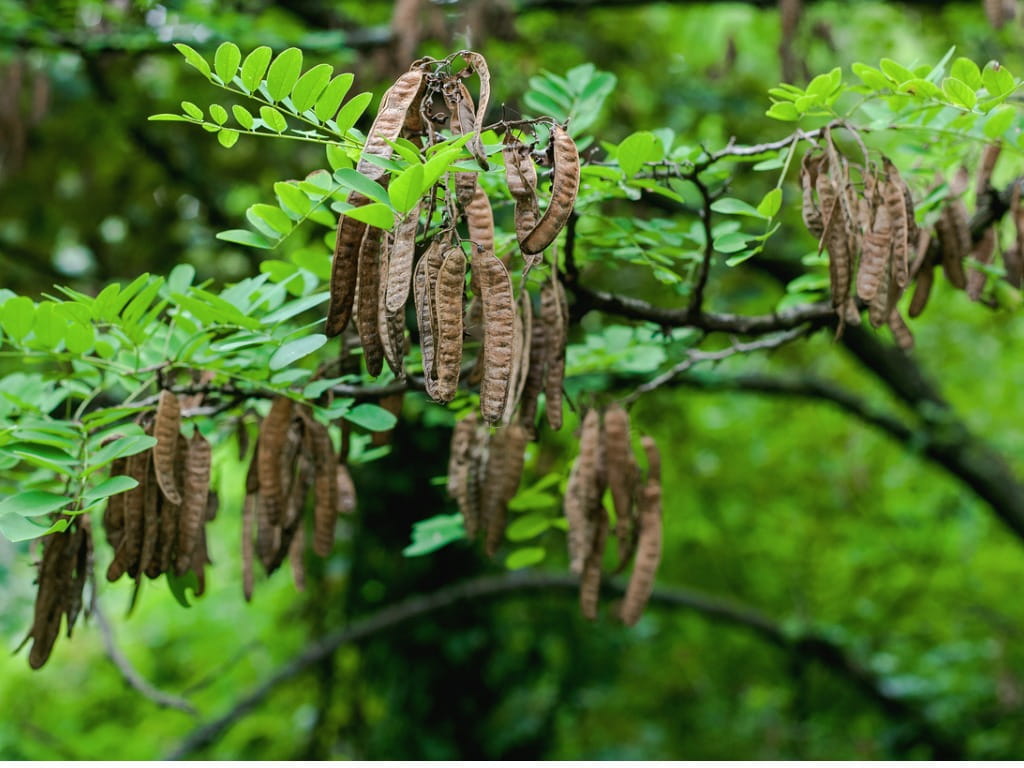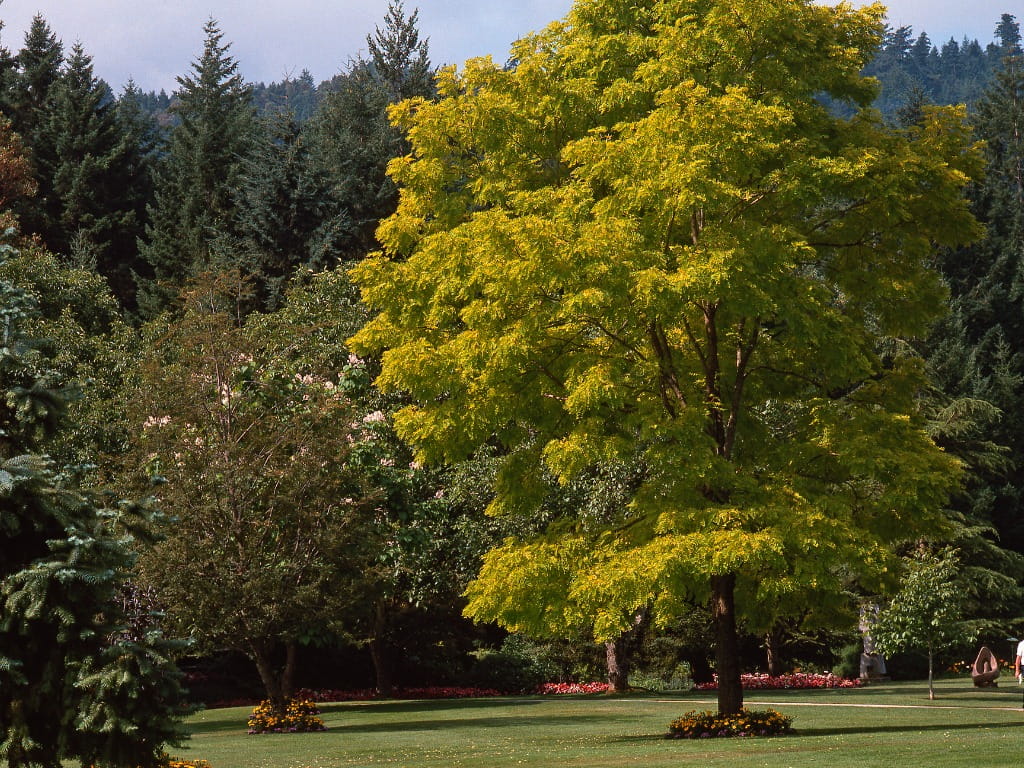Are Black Locust Trees Toxic?

The Bottom Line
The bark, seeds, and leaves of black locust trees contain poisonous compounds called toxalbumins. They are toxic to both livestock and humans and have been reported to cause symptoms from gastrointestinal distress to nervous system disorders. Any exposure to black locust should be taken seriously, and professional guidance should sought.

The black locust (Robinia pseudoacacia) tree is often found in temperate zones and is native to eastern and central US. The bark of the trunk is coarse and deeply furrowed and bears characteristic stout thorns that extend to its branches. Generally blooming in May or June, the white flowers of the tree droop into clusters about 4–8 inches long. Another characteristic feature of the black locust tree is the light to dark brown legumes (pods) that are found on the tree during the winter. They are usually about 2–4 inches long, flat, straight or slightly curved, and typically contain 3–10 seeds per pod.
The earliest reports of possible poisoning associated with the black locust involved horses, which either became severely ill or died from swallowing parts of the tree. There have also been a handful of cases in which young children have become sick after chewing on or eating parts of the bark or seeds.
Black locust trees contain the toxalbumins (toxic protein molecules produced by certain plants) robin and phasin in their leaves, bark, and seeds. These toxic compounds inhibit protein synthesis and can cause cell death. Of note, the flowers appear to be nontoxic or substantially less toxic. Based on the reports of ingestions by humans in the literature, the most common symptoms after ingestion include nausea, weakness, flushing, lethargy, and vomiting. Rare reports of more severe symptoms like liver injury and seizures have been reported. There have been suggestions that symptoms appear to be related to the amount of material ingested and the extent of chewing—higher amounts and more chewing leads to potentially more serious symptoms. Most gastrointestinal effects develop within 6 hours after an ingestion, which can also lead to other complications like dehydration.
Although most cases of exposure described in the medical literature are of people swallowing parts of this plant, there have also been several reports of skin punctures and injury from the thorns located on the bark and branches. Most of these exposures have resulted in local symptoms such as pain, swelling, and rash. However, there have been a few reports of more severe outcomes following punctures from black locust thorns including neurologic (brain related) symptoms and local tissue death (necrosis).
Although severe toxicity after exploratory exposures to black locust seeds and bark is uncommon, the handful of cases reported indicate that all black locust exposures should be taken seriously. If someone has been exposed to black locust, get an immediate personalized recommendation online or call Poison Control at 1-800-222-1222. Both options are free, confidential, and available 24 hours a day.
Kristina Yee, PharmD
Certified Specialist in Poison Information
Poisoned?
Call 1-800-222-1222 or
Prevention Tips
- Have a knowledgeable expert identify the plants and trees growing in your home, backyard and neighborhood, so you know which ones are harmful and which ones are ok for children and pets.
- Consult our helpful plant guide
- Call your local plant nursery to see if they can help you identify samples of plants
- Never eat an unknown plant or seed without verification from a clear field guide or someone with experience.
- If you are interested in foraging for wild plants, join an organization with experienced members.
- Always wear appropriate protective gear like gloves when gardening and pruning.
This Really Happened
An 8-year-old boy developed symptoms 2½ hours after chewing a piece of locust bark the size of an adult hand (3–4 mouthfuls). He had five episodes of vomiting prior to being seen in an emergency room. The results of laboratory tests were within acceptable limits except for an increased white blood cell count and elevated circulating concentrations of an enzyme suggesting liver damage (peaked on day 5). He was treated with ondansetron (also known as Zofran, an antinausea medication), activated charcoal, and IV fluids. He was sent home on day 5 with a normal white blood cell count. (Hui, 2004).For More Information
References
Burrows GE, Tyrl RJ. Toxic plants of North America. 2nd ed. Oxford (UK): Wiley-Blackwell; 2013 p 595–7.
Filandrinos DT, Sioris LJ. Transient elevation of liver function tests following ingestion of black locust seeds [abstract]. Vet Hum Toxicol. 1992;34(4):351.
Poisoned?
Call 1-800-222-1222 or
Prevention Tips
- Have a knowledgeable expert identify the plants and trees growing in your home, backyard and neighborhood, so you know which ones are harmful and which ones are ok for children and pets.
- Consult our helpful plant guide
- Call your local plant nursery to see if they can help you identify samples of plants
- Never eat an unknown plant or seed without verification from a clear field guide or someone with experience.
- If you are interested in foraging for wild plants, join an organization with experienced members.
- Always wear appropriate protective gear like gloves when gardening and pruning.
